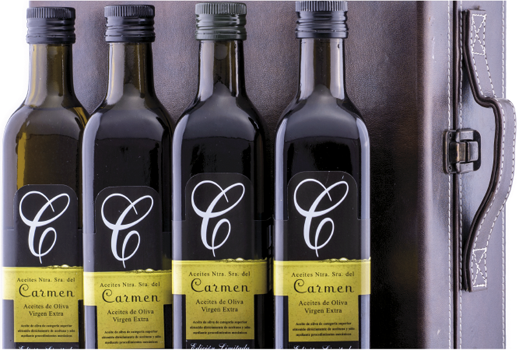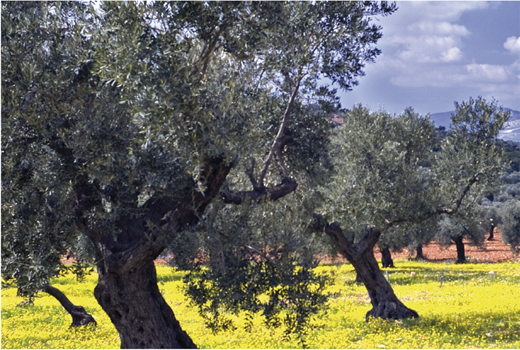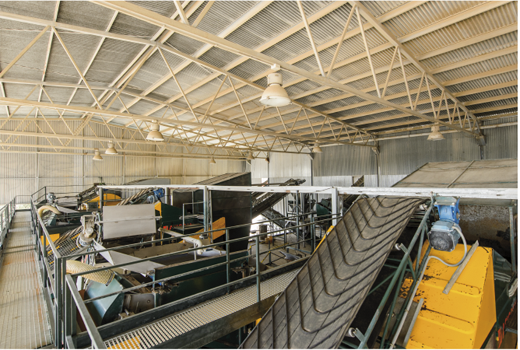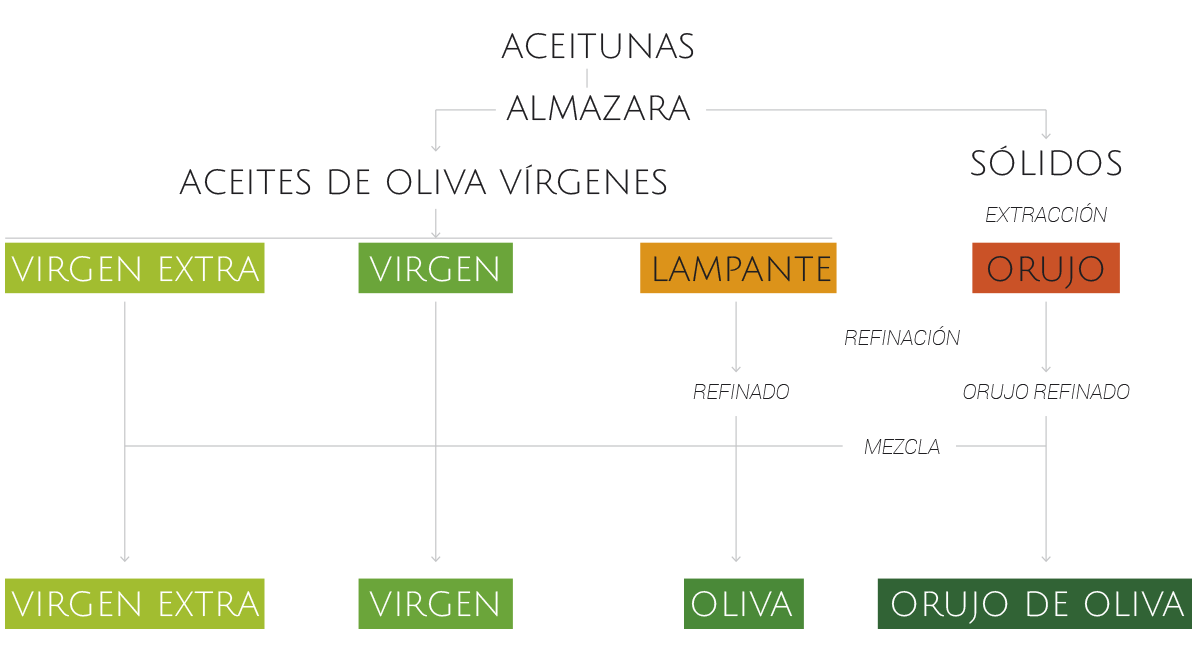This website uses cookies so that we can provide you with the best user experience possible. Cookie information is stored in your browser and performs functions such as recognising you when you return to our website and helping our team to understand which sections of the website you find most interesting and useful.
There are different varieties of olive oil which we need to know so we can make a better use of them. Official categories (legally regulated by the European Union) are the following:
1. VIRGIN OLIVE OIL
Virgin olive oil is the fruit juice that comes directly from the oil mill. It is obtained exclusively by the use of mechanical or other physical means under conditions which may not altere the oil.
Virgin olive oil is the fruit juice that comes directly from the oil mill. It is obtained exclusively by the use of mechanical or other physical means under conditions –especially temperature- which may not altere the oil. This has just to undergo such treatments as washing, decanting, centrifuging and filtering. It is a natural product that conserves the taste, the smell and the vitamins of the fruit. Neither chemical processes nor products are used in its production.
The virgin olive oil which is obtained directly from the olive is classified in terms of quality into three different types according to chemical and organoleptic (sensory) analyses.

EXTRA VIRGIN OLIVE OIL
It has a superior taste and contains no more than 0.8% free acidity (oleic acid).
This kind of virgin olive oil has proved successfully in both chemical and organoleptic analyses. In the results of the tasting, the medium score of fruitiness must be over 0 and no defects can be observed.

VIRGIN OLIVE OIL
It has a good taste with free acidity up to 2% (it is also known as “fine virgin olive oil” in the stages of production and wholesale trade).
This kind of oil is not optimal, although it is considered a good product. Its little sensorial defects classifies it as extra virgin olive oil but it still remains suitable and excellent for human consumption.

LAMPANTE OLIVE OIL
The kind of oil classified as Lampante is the virgin olive oil which has obvious defects in its organoleptic features.
Moreover, its chemical composition is significantly worse than extra virgin and virgin olive oils. They are not suitable for human consumption and are sent to oil refineries where they will be processed.
2. REFINED OLIVE OIL
Lampante olive oils are sent to oil refineries where they undergo chemical- physical processes of refining. In these processes any unwanted particles are released and the smell, the taste and the colour are removed, leaving a tasteless, odourless oil. Refined olive oil is still rich in monounsaturated fatty acids, but has lost its natural antioxidants. Refined oils are not commercialised directly.
3. OLIVE OIL
It is composed of refined olive oil and virgin olive oil or extra virgin olive oil with a máximum acidity of 1%. There is no regulation on the percentage of virgin olive oil that the mixture must have. It can have between 60% and 90% of refined olive oil and between 10% and 40% of virgin olive oil (extra or extra virgin) on average, but there can be up to 2% of virgin olive oil and 98% of refined olive oil.
This oil is rich in monounsaturated fatty acids, although it does not have the same natural antioxidants (which provide greater benefit to health) as other virgin olive oils since a great proportion has been chemically treated in refineries.
4. REFINED POMACE OLIVE OIL
In the process to obtain virgin olive oil, there are solid materials that are discarded and later treated with organic solvents to produce more oil. The oil obtained by solvents is taken to special refineries where the solvent is removed along with the bad taste and smell to turn it into a tasteless, odourless oil. Refined pomace olive oils are not commercialised directly.
5. POMACE OLIVE OIL
It is composed by refined pomace olive oil and virgin olive oil or extra virgin olive oil with a maximum acidity of 1%. It usually has between 90% and 95% of refined pomace olive oil and between 10 % and 5% of virgin olive oil (virgin olive oil or extra virgin olive oil). It is considered a second quality oil, which is not very commercialised in our country and generally exported to non-producing countries. This oil is suitable for human consumption, being mostly used for frying in food industries and it is not recommended for being used raw.


